Introduction:
Let’s be real—nobody daydreams about scrubbing pool walls. You’d rather be floating on a raft with a margarita, not playing detective with whatever slime decided to decorate your tiles. But here’s the kicker: ignore those walls, and suddenly your pool looks like a swamp creature’s Airbnb. Algae throws raves, calcium builds its own mini Great Wall, and that mysterious brown stain? Yeah, it’s not “just dirt.”
This isn’t some fancy manual with jargon that sounds like a chemistry exam. It’s the straight-talk guide you wish came with your pool—no fluff, no scare tactics, just real fixes for real people who’d rather be doing, well, anything else. We’ll cover why your cleaning routine might be backfiring (chlorine isn’t a magic wand, folks), how to pick tools that don’t suck, and lazy hacks to keep things sparkly without breaking a sweat.
Pro tip: If you’ve ever googled “why does my pool look like a science experiment?”—congrats, you’re in the right place. Let’s get those walls so clean, even your judgy neighbor will shut up about it. 🍹
Why Your Pool Walls Look Like a Science Experiment Gone Wrong
You step outside, ready for a refreshing dip in your pool, only to find the walls looking like the set of a low-budget horror movie. Streaks of green, chalky white patches, and mysterious brown stains have turned your once-pristine oasis into a science fair project gone rogue. What the heck happened? And more importantly, how do you fix it without losing your sanity?
Let’s break down the usual suspects ruining your pool’s vibe. Algae is the most common party crasher—it shows up uninvited, spreads like gossip, and turns your water into something resembling pea soup. Then there’s calcium buildup, which clings to your walls like a bad habit, leaving behind crusty white deposits that laugh at your half-hearted scrubbing. And let’s not forget the “what even is that?” stains—those weird discolorations that appear overnight, making you question whether someone dumped iced tea in your pool when you weren’t looking.
Here’s where most pool owners go wrong: They assume dumping extra chlorine in the water will magically fix everything. Newsflash—it won’t. Chlorine is great for keeping bacteria in check, but it’s about as effective at removing stubborn wall gunk as a squirt gun is at putting out a bonfire. Algae, especially the clingy types like black or mustard algae, need more than a casual chemical splash to disappear. And calcium? That stuff’s basically pool plaque—it needs elbow grease (or the right tools) to scrape off.
Another myth? Thinking you can ignore the problem until your next pool party. Wrong. Pool stains and buildup don’t just sit politely waiting for you to deal with them. They multiply, harden, and eventually turn into a problem so big you’ll need a chisel and a prayer to fix it. By the time you notice that faint green tint or those “harmless” white streaks, the issue’s already throwing a rager on your pool walls.
So, how do you fight back? First, identify your enemy. Green algae? Easy to spot. Black algae? Sneakier, with deep roots (literally) that make it a pain to remove. Calcium scale? It feels like sandpaper and loves to hang out near water features where evaporation’s high. Once you know what you’re dealing with, you can pick the right weapon—whether it’s a stiff-bristled brush, a specialized cleaner, or a chemical treatment that actually works.
Here’s a quick cheat sheet to diagnose your pool’s issues:
| Problem | Looks Like | Feels Like | Common Causes |
|---|---|---|---|
| Green Algae | Slimy, bright green | Slippery | Low chlorine, poor circulation |
| Black Algae | Dark spots, speckled | Rough, embedded | Poor sanitation, shady areas |
| Calcium Scale | Chalky white streaks | Crusty | Hard water, high pH |
| Organic Stains | Brown/yellow patches | Stained but smooth | Leaves, dirt, metals |
Prevention’s your best friend here. Brush your walls weekly—yes, even if they look fine. Algae starts as a thin, invisible film before it turns into a full-blown swamp situation. Keep your water balanced (pH 7.4–7.6, alkalinity 80–120 ppm) because imbalanced water is basically a welcome mat for buildup. And if you’ve got hard water, consider a sequestering agent to stop minerals from sticking to your walls like glitter at a craft fair.
For existing messes, here’s the real talk: You’ll need more than hope. A good pool wall cleaner (manual or automatic) is non-negotiable. For algae, hit it with a stiff brush and shock treatment. Calcium scale? A pumice stone (for plaster) or scale remover (for vinyl) works wonders. And those mystery stains? Try a vitamin C tablet (for metal stains) or a magic eraser (for organic gunk)—sounds weird, but it works.
Bottom line? Your pool walls don’t have to look like a failed lab experiment. Spot the problem early, attack it with the right tools, and for the love of summer, stop thinking chlorine is a cure-all. Now go reclaim your pool—before the algae starts charging rent.
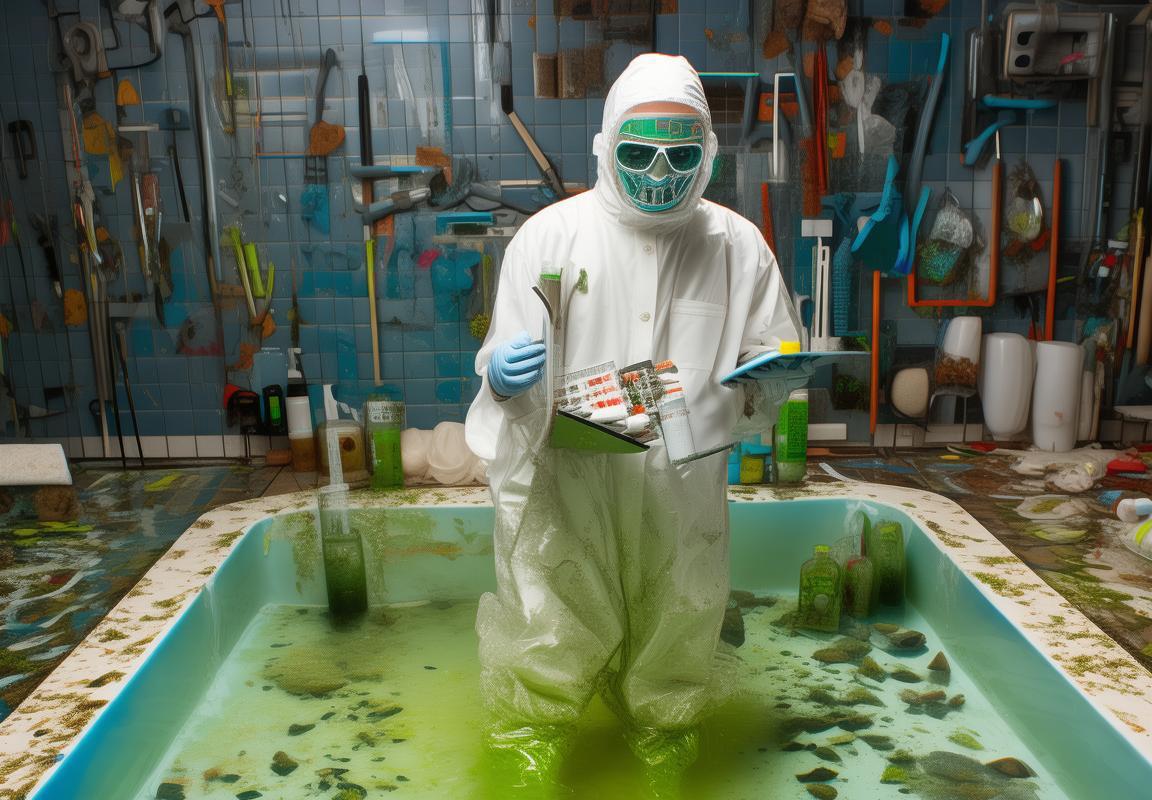
Pool Wall Cleaner 101: Picking Your Weapon
You’ve stared at your pool walls long enough to know they won’t clean themselves. But before you grab the first scrubber you see at the store, let’s break down the real contenders in the battle against grime. Because not all pool wall cleaners are created equal—some are like bringing a butter knife to a gunfight.
Manual Brushes: The Old-School Workout
If you enjoy turning pool maintenance into an upper-body workout, manual brushes are your jam. They come in different bristle types—nylon for vinyl pools (unless you enjoy shredding your liner like confetti) and stainless steel for concrete or plaster (because algae doesn’t stand a chance against metal). The downside? Your arms will feel like jelly after one session, and let’s be real, nobody has time for that every week.
Pro Tip: Get one with an extendable pole unless you love awkwardly bending over like you’re trying to fish out your keys from the deep end.
Automatic Pool Cleaners: The Lazy (Smart) Person’s Choice
These little bots are like Roombas for your pool—set ‘em loose, and they’ll crawl along the walls sucking up debris. There are three main types:
- Suction-side cleaners: Hook up to your pool’s suction port. Cheap but slow, like a sloth on a Sunday stroll.
- Pressure-side cleaners: Use water pressure to move around and blast dirt into a filter bag. More powerful, but they hog your pool’s return jet.
- Robotic cleaners: The VIPs of the pool-cleaning world. They run on electricity, don’t rely on your pool’s pump, and actually climb walls like Spider-Man. Downside? They cost more than your last vacation.
Myth Buster: “Robotic cleaners last forever!” Nope. If you don’t clean their filters regularly, they’ll quit faster than a teenager asked to mow the lawn.
Magnetic Cleaners: The Underrated Hack
These little guys are like magic—stick one inside the pool, another outside, and they cling together through the wall. Slide them around, and boom, algae doesn’t stand a chance. Perfect for fiberglass or vinyl pools where brushes might scratch. Just don’t expect them to handle heavy buildup—they’re more like a quick touch-up tool.
The Wrong Cleaner = Disaster
Pick the wrong weapon, and you’re in for a world of regret:
- Steel brush on vinyl? Congrats, you just turned your pool liner into Swiss cheese.
- Weak suction cleaner on a big pool? It’ll die of exhaustion before finishing half the job.
- Robotic cleaner with no fine-filter setting? Enjoy picking leaves out of it every five minutes.
Quick Guide: Match Your Cleaner to Your Pool
| Pool Type | Best Cleaner | Avoid Like the Plague |
|---|---|---|
| Vinyl | Nylon brush, magnetic cleaner | Steel brushes, abrasive pads |
| Concrete/Plaster | Steel brush, robotic cleaner | Weak suction-side cleaners |
| Fiberglass | Magnetic cleaner, soft-bristle brush | Harsh scrubbing tools |
The Secret Weapon: Enzymes & Preventatives
Even the best cleaner won’t fix everything if your water chemistry is a mess. Use enzyme treatments to break down oils (sunscreen + sweat = nasty film) and keep calcium levels in check. A little prevention means less scrubbing later—because ain’t nobody got time to wrestle with pool walls every weekend.
Final Reality Check
- Budget? A manual brush gets the job done but demands sweat equity.
- Convenience? Robotic cleaners are worth every penny if you value your free time.
- Small pool? A magnetic cleaner might be all you need.
Choose wisely, or you’ll be back to scrubbing like it’s 1999.
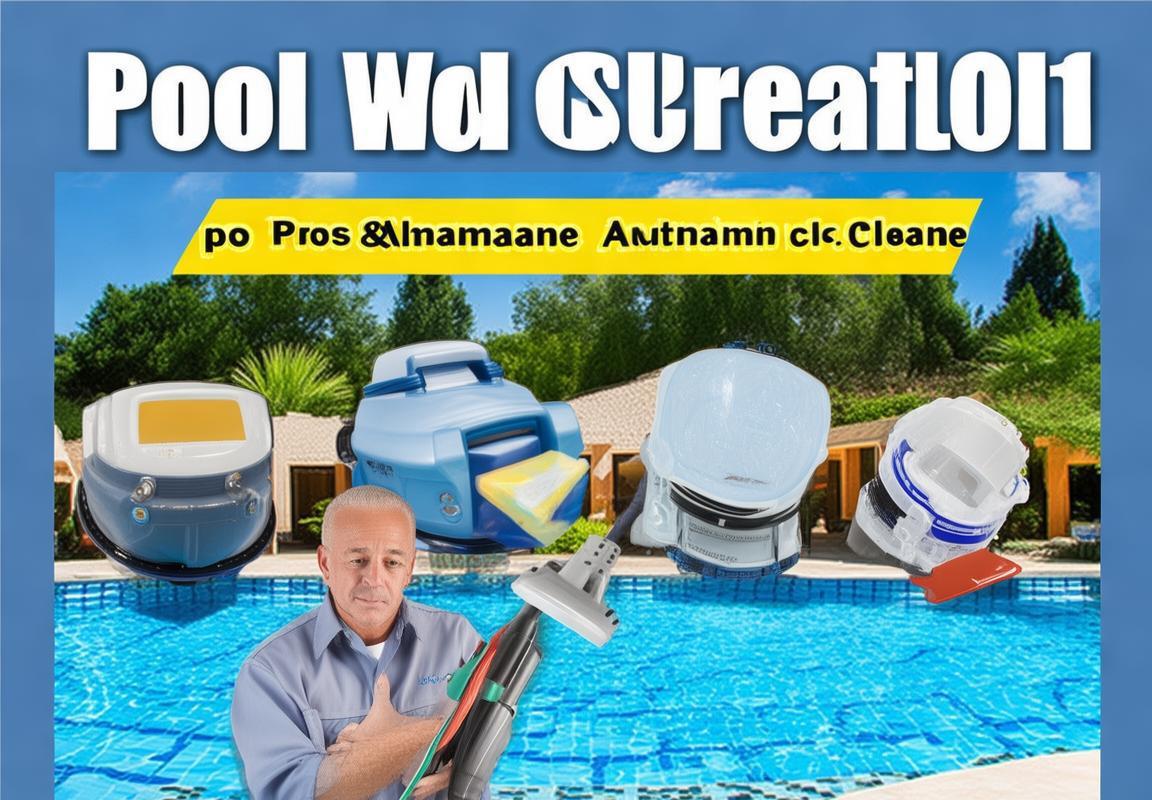
The Lazy Person’s Guide to Actually Clean Walls
“Why Your Pool Walls Look Like a Science Experiment Gone Wrong”
You step outside, ready for a relaxing dip, only to find your pool walls covered in what looks like a failed middle-school biology project. Green slime, weird white crust, and mysterious brown streaks—what the heck happened? It’s like your pool threw a rager while you were asleep, and now you’re stuck cleaning up the aftermath.
Algae is the usual suspect, showing up uninvited like that one neighbor who never leaves. But not all algae are created equal. Green algae? Annoying but manageable. Black algae? That stuff’s basically pool herpes—once it’s there, it’s a nightmare to get rid of. Then there’s mustard algae, which sounds harmless until you realize it’s basically the Houdini of pool stains, disappearing when you shock the pool only to reappear two days later.
Calcium buildup is another party crasher. If your walls feel like sandpaper or have those weird white streaks, congratulations—your water’s harder than your last calculus exam. This happens when your pH and alkalinity are out of whack, and suddenly your pool walls are doubling as a chalkboard.
And let’s not forget the mystery stains. Maybe it’s rust from a forgotten pool toy, or maybe it’s some kind of organic funk from leaves that decided to decompose in your pool instead of the yard. Either way, it looks gross, and scrubbing it feels like trying to erase permanent marker with a wet napkin.
Here’s where most people mess up: thinking chlorine alone will fix everything. Newsflash—chlorine’s great at killing bacteria, but it’s not a magic eraser. If your walls are already coated in gunk, you’re gonna need more than a few tablets to fix it. And don’t even get me started on the folks who ignore their filter, then wonder why their pool looks like a swamp. A dirty filter is basically a petri dish for algae, so if you’re not cleaning or replacing it regularly, you’re just giving the gunk a free ride back into your water.
So how do you fight back? First, figure out what you’re dealing with. Green algae? Hit it with a stiff brush and some algaecide. Calcium scale? You’ll need a pumice stone (for plaster) or a vinegar solution (for tile). Mystery stains? Try a magic eraser or a specialized stain remover. And for the love of all things holy, check your pH and alkalinity levels before you start dumping chemicals in like a mad scientist.
Quick Reference: What’s Crudding Up Your Pool?
| Problem | Looks Like | Fix |
|---|---|---|
| Green Algae | Slimy green patches | Brush + algaecide + shock |
| Black Algae | Dark, speckled spots | Stain brush + heavy shock + persistence |
| Calcium Scale | White, chalky buildup | Pumice stone (plaster) or vinegar (tile) |
| Organic Stains | Brown/yellow streaks | Vitamin C tablets or stain remover |
| Metal Stains | Blue/green/rust discoloration | Citric acid or metal sequestrant |
The bottom line? Your pool walls don’t have to look like a biohazard. Figure out what you’re dealing with, attack it with the right tools, and for Pete’s sake, keep up with basic maintenance. Otherwise, you’re just one step away from hosting a wildlife documentary in your backyard.
“Pool Wall Cleaner 101: Picking Your Weapon”
Alright, let’s talk tools. You wouldn’t use a butter knife to chop down a tree, so why are you scrubbing your pool walls with some flimsy brush you found in the garage? If you’re serious about keeping your pool walls clean (and let’s be real, you should be), you need the right gear. Here’s the breakdown.
Manual brushes are the old-school workhorses. They’re cheap, they’re simple, and they get the job done—if you don’t mind putting in some elbow grease. The key here is bristle type. Nylon brushes are your go-to for vinyl liners because they won’t scratch the surface. Stainless steel? Great for concrete or plaster, but use that on a vinyl pool and you’ll be shopping for a new liner faster than you can say “oops.”
Then there’s the pool wall cleaner that’s basically a mop on steroids—the extendable pole with a scrubber head. These are great for reaching tricky spots (looking at you, waterline grime), but let’s be honest, they’re not exactly fun to use. If you’ve got a big pool, your arms will feel like jelly after one cleaning session.
Automatic cleaners are where things get interesting. Suction-side cleaners hook up to your pool’s filtration system and glide around like a Roomba with a death wish. They’re decent for daily maintenance, but they tend to get stuck on steps or corners. Pressure-side cleaners are a step up—they use water pressure to move around and often come with their own debris bags, so they’re not clogging up your filter.
But the real MVPs are robotic pool cleaners. These little guys are like the Teslas of pool cleaning—smart, efficient, and kinda pricey. They scrub, they vacuum, and some even climb walls like Spider-Man. The downside? They’re an investment. A good one will set you back a few hundred bucks, but if you hate scrubbing, it’s worth every penny.
Magnetic cleaners are the underdogs of the pool world. They’re simple—just two magnets, one inside the pool and one outside—that you move around to clean the walls. They’re cheap and great for spot-cleaning, but they’re not gonna handle a full-blown algae invasion.
Pool Cleaner Showdown: Which One’s Right for You?
| Type | Pros | Cons | Best For |
|---|---|---|---|
| Manual Brush | Cheap, no setup | Labor-intensive | Small pools, spot cleaning |
| Extendable Scrubber | Reaches everywhere | Arm fatigue | Waterline grime |
| Suction-Side Cleaner | Affordable, low maintenance | Gets stuck easily | Daily debris pickup |
| Pressure-Side Cleaner | Stronger than suction, has debris bag | Needs booster pump | Medium to large pools |
| Robotic Cleaner | Does everything, programmable | Expensive | People who hate scrubbing |
| Magnetic Cleaner | Cheap, easy to use | Not for heavy jobs | Quick touch-ups |
So what’s the verdict? If you’re on a budget and don’t mind some manual labor, a good brush or scrubber will do the trick. If you’d rather kick back with a margarita while a robot does the work, go for a high-end automated cleaner. Just remember: no tool is magic. Even the fanciest robot won’t fix years of neglect, so pair it with regular maintenance unless you enjoy swimming in a science experiment.
“The Lazy Person’s Guide to Actually Clean Walls”
Let’s face it—scrubbing pool walls sucks. It’s hot, it’s tedious, and by the time you’re done, you’re too exhausted to actually enjoy the pool. But what if I told you there’s a way to keep your walls clean without turning into a human scrub brush? Welcome to the lazy person’s guide to pool maintenance.
First, prevention is key. Algae and stains don’t pop up overnight—they’re the result of neglect. Keep your chlorine levels steady (1–3 ppm), and shock your pool every week or two, depending on usage. Think of it like brushing your teeth: skip it for too long, and things get nasty fast.
A pool cover is your best friend. Not only does it keep leaves and debris out, but it also reduces evaporation, which means fewer chemical imbalances and less scaling. Sure, putting it on and off is a hassle, but it beats spending your Saturday fishing out sludge.
Now, let’s talk the waterline—that greasy, sunscreen-infused ring that makes your pool look like a frat house bathtub. The trick? A magic eraser. No joke, those little foam blocks work wonders on scum lines. Just glide it along the edge every few days, and you’ll never have to deal with crusty buildup again.
For the truly lazy, automatic cleaners are a godsend. Set a robotic cleaner to run a few times a week, and it’ll handle the walls and floor for you. Just make sure you empty its filter bag, or it’ll start spitting debris back into the water like a toddler with a mouthful of broccoli.
Here’s a pro tip: toss a tennis ball into the pool. The fibers absorb oils from sunscreen and lotions, keeping the water (and walls) cleaner longer. It’s stupidly simple, but it works.
Lazy Person’s Cleaning Schedule
| Task | Frequency | Effort Level |
|---|---|---|
| Skim debris | Daily (or after storms) | Low |
| Check chlorine/pH | 2–3 times a week | Low |
| Shock pool | Weekly (or after heavy use) | Medium |
| Scrub walls | Monthly (or as needed) | High (but less if you follow this guide) |
| Clean filter | Every 4–6 weeks | Medium |
The secret to lazy pool maintenance? Consistency. Spend five minutes a day skimming and checking chemicals, and you’ll avoid marathon cleaning sessions. Let things slide, and you’ll be elbow-deep in algae before you know it.
And when all else fails—call a pro. Sometimes, it’s worth paying someone $150 to acid-wash your walls so you can spend your weekend actually swimming instead of playing cleanup crew. Laziness isn’t about doing nothing; it’s about working smarter, not harder. Now go grab a floatie and enjoy that sparkling pool. You’ve earned it.
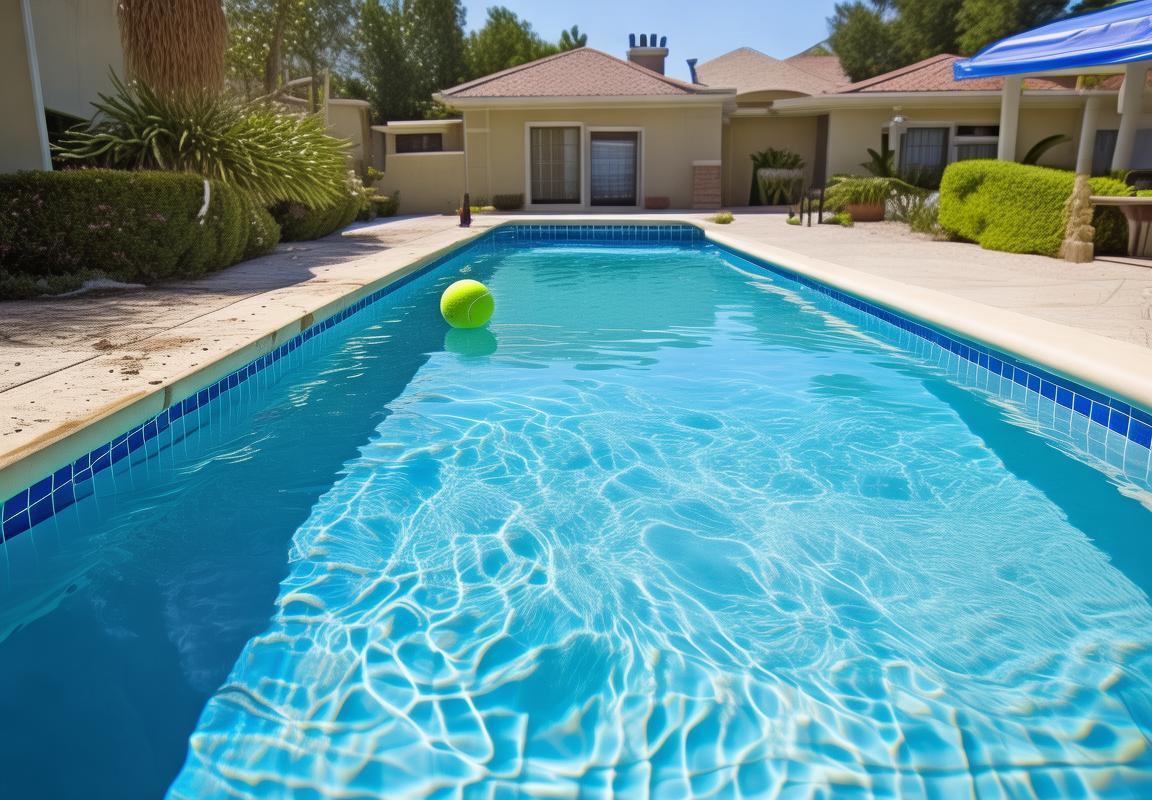
Oops—Don’t Do This Unless You Love Extra Work
“Pool Wall Cleaner 101: Picking Your Weapon”
Alright, let’s cut to the chase—your pool walls are gross, and you need the right tool to fix them. But walk into any pool supply store, and you’ll feel like you’re picking a weapon for a medieval battle. Brushes, bots, vacuums, scrubbers—what the heck actually works? Here’s the no-BS breakdown so you don’t waste money on something that’ll just collect dust in your garage.
Manual Brushes: Old-School but Effective
If you enjoy a good workout (or just pretending you’re training for some weird underwater Olympics), a manual brush is your go-to. These bad boys come in three flavors:- Nylon bristles: Perfect for vinyl pools—stiff enough to scrub algae but won’t shred your liner like a cheese grater.- Stainless steel: The Hulk of pool brushes. Only for concrete or plaster pools because they’ll annihilate vinyl faster than a kid with scissors near a birthday balloon.- Hybrid (nylon-wrapped steel): The Goldilocks option—tough on stains but gentle enough for most surfaces.
Pro Tip: Get a telescopic pole unless you enjoy bending over like a garden gnome for an hour.
Automatic Pool Cleaners: For the Lazy (or Smart) People
These fancy robots do the dirty work while you sip margaritas. But not all bots are created equal—some are genius, others are glorified Roomba fails. Here’s the cheat sheet:
| Type | Best For | Pros | Cons |
|---|---|---|---|
| Suction-side | Small pools, tight budget | Cheap, low maintenance | Slow, hates leaves, needs pump |
| Pressure-side | Medium pools, debris | Fast, great for sand/dirt | Needs separate booster pump |
| Robotic | Big pools, lazy humans | Self-contained, smart mapping | Expensive ($$$), cords tangle |
Hot Take: If you’ve got cash to burn, a robotic cleaner is like hiring a tiny pool butler. If you’re cheap, a suction-side one will do… eventually.
Magnetic Cleaners: The Underdog MVP
These little guys cling to the sides like a koala and scrub while you barely lift a finger. Ideal for fiberglass or vinyl pools where brushes feel like overkill. Just slide ‘em around, and boom—clean walls. Downside? They’re useless on concrete (like trying to clean a sidewalk with a Post-it).
The “Nuclear Option” (Acid Washing)
When your walls look like they belong in a horror movie, sometimes you gotta call in the big guns. Acid washing strips everything off—algae, stains, probably a few layers of your soul. But it’s messy, dangerous, and a last resort (unless you enjoy playing mad scientist with hydrochloric acid).
Final Reality Check
- Vinyl pools? Stick to nylon brushes or magnetic cleaners. Steel = instant regret.
- Concrete pools? Steel brushes or pressure-side bots. Nylon won’t cut through mineral buildup.
- Fiberglass? Magnetic or robotic—gentle but effective.
Pick wrong, and you’re either scrubbing forever or buying a new liner. Choose wisely. 🛠️
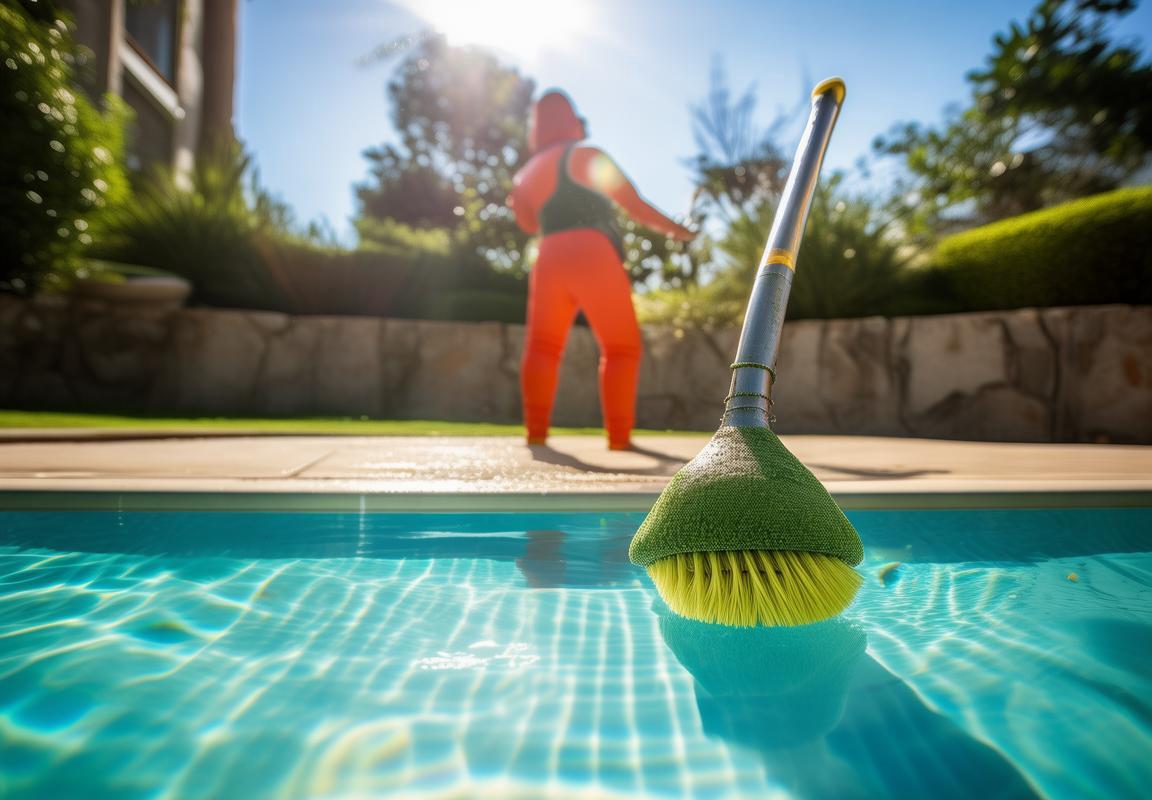
Pro Tricks They Don’t Tell You at the Pool Store
“Pool Wall Cleaner 101: Picking Your Weapon”
Let’s be real—scrubbing pool walls is nobody’s idea of a good time. But if you’re gonna do it, at least pick the right tool so you’re not out there sweating like you’re in a sauna while your neighbor sips margaritas. The wrong cleaner turns a 20-minute job into a full-blown workout, and ain’t nobody signing up for that.
Manual Brushes: Old-School but EffectiveThese are the granddaddies of pool cleaning—simple, no-nonsense, and they don’t care if your Wi-Fi’s down. You’ve got three main types:- Nylon bristles: The “gentle giant” for vinyl pools. Won’t scratch, but might need extra elbow grease for stubborn algae.- Stainless steel: The “heavy-duty beast” for concrete or plaster. Eats through calcium scale like a chainsaw through butter—but will shred vinyl faster than a puppy with a new shoe.- Hybrid brushes: The “Goldilocks” option. Mixes stainless and nylon so you can switch between surfaces without buying two brushes.
Pro tip: Angle the brush downward so debris gets pushed toward the drain. Otherwise, you’re just rearranging the gunk like a bad DJ mixing sludge.
Automatic Cleaners: For the Lazy (or Smart) FolksThese fancy bots do the work while you binge Netflix. But not all are created equal:
| Type | Best For | Downsides |
|---|---|---|
| Suction-side | Budget buyers | Gets stuck on ladders like a confused Roomba |
| Pressure-side | Medium pools | Needs a separate pump ($$$) |
| Robotic | Big/spiky pools | Costs more than your first car |
The Dolphin Nautilus is the crowd favorite—it climbs walls like Spider-Man and has a filter so fine it could catch your ex’s excuses. But if you’ve got a ton of leaves, a pressure-side cleaner with a debris bag might save you from daily basket-emptying tantrums.
Magnetic Cleaners: The Underdog MVPThese little guys are like having a Roomba for your pool’s windows (if pools had windows). Just glide the outside magnet along the wall, and the inside piece follows, scrubbing as it goes. Perfect for fiberglass or tile-line grime. Downside? They’re useless on plaster and about as strong as a kitten if your walls are super dirty.
The “Wait, That Works?” HackGot a stubborn spot? Tape a pumice stone to a pool pole. It’s the redneck solution for calcium deposits, and it costs less than a fancy “scale remover” from the pool store. (Note: Only for plaster pools—vinyl will look like it lost a fight with a cheese grater.)
Water Testing: The Secret WeaponYour cleaner can’t win if your water chemistry’s a disaster. Algae thrives when pH is off, and scale builds up if calcium’s too high. Test weekly, and keep these numbers in the sweet spot:- pH: 7.4–7.6- Chlorine: 2–4 ppm- Calcium hardness: 200–400 ppm
A $20 test kit saves hours of scrubbing. Otherwise, you’re just polishing a turd.
When to Go NuclearIf your walls feel like sandpaper or sport more colors than a Lisa Frank notebook, it’s time for an acid wash. Yes, it’s harsh (and smells like Satan’s laundry), but sometimes you gotta nuke it from orbit. Just don’t DIY unless you enjoy chemical burns—call a pro.
Bottom line: Your pool wall cleaner should match your surface, laziness level, and budget. Otherwise, you’re just spinning your wheels—and probably cussing a lot.
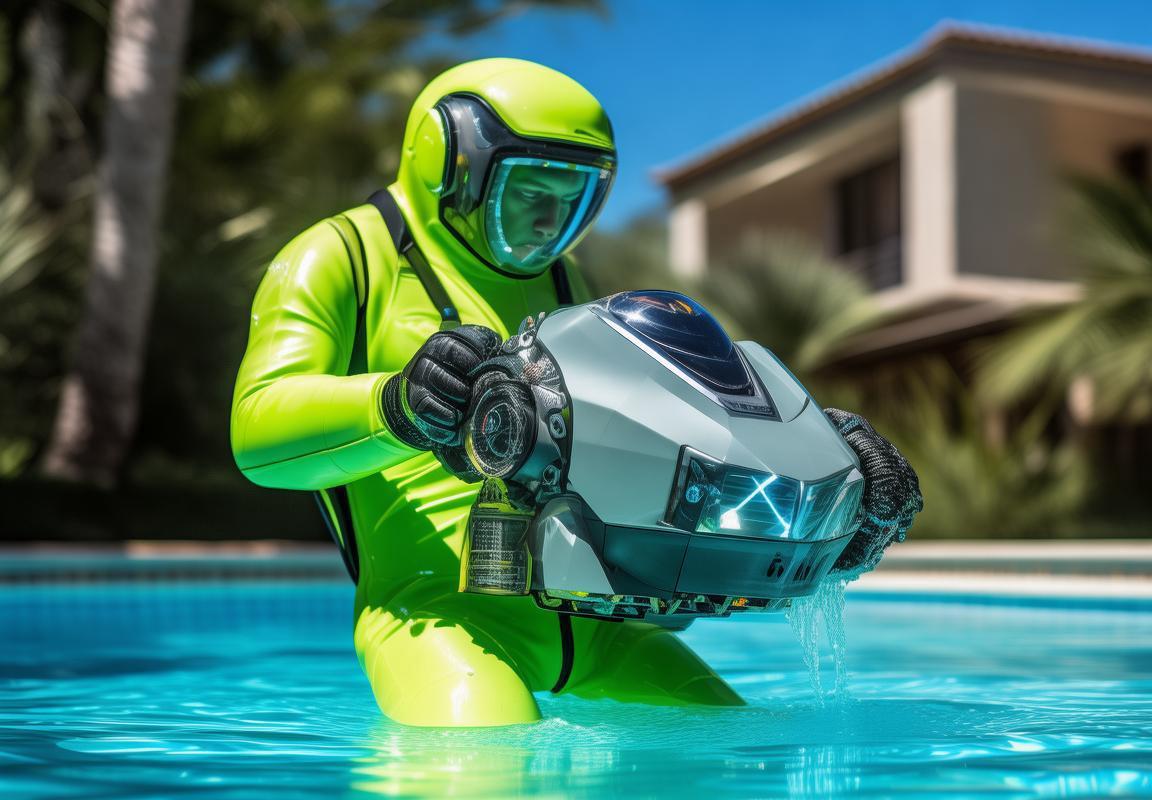
Automatic Cleaners: Worth the Hype or Just a Fancy Paperweight?
“Why Your Pool Walls Look Like a Science Experiment Gone Wrong”
You step outside, ready for a relaxing dip, only to find your pool walls covered in what looks like a failed high school biology project. Green slime, white crust, mysterious brown streaks—what the heck happened? It’s not just bad luck; it’s usually a mix of neglect, chemistry fails, and Mother Nature messing with you.
Algae is the usual suspect, especially if your pool’s been sitting like a forgotten bathtub. That slimy green gunk? It’s basically a plant party, and chlorine alone won’t always crash it. Then there’s calcium buildup—those rough white patches that make your pool feel like sandpaper. If your water’s harder than a calculus exam, scale’s gonna stick like glitter at a craft fair. And don’t even get me started on “mystery stains.” Could be leaves, sunscreen, or maybe that one time Uncle Bob “forgot” to shower before jumping in.
Biggest myth? “Just shock it, and the walls will clean themselves.” Nope. Shocking kills bacteria, but if algae’s already bunkered down, you’ll need to scrub like you’re mad at it. Another classic blunder: assuming all stains are the same. Brown streaks might be rust (from metal parts), while black spots could be mold or even—yikes—black algae, which laughs at weak chlorine like a villain in a bad movie.
Here’s the cheat sheet for diagnosing your wall funk:
| Problem | Looks Like | Usual Cause |
|---|---|---|
| Green algae | Slimy, pea-soup walls | Low chlorine, poor circulation |
| White scale | Chalky, rough patches | Hard water, high pH |
| Brown/yellow stains | Rust-colored streaks | Metal debris, old fittings |
| Black spots | Dark, speckled patches | Black algae (the Terminator of pool gunk) |
Prevention’s easier than cure. Test your water weekly—pH, alkalinity, and chlorine levels matter more than you think. Brush walls before algae sets up camp (once a week keeps the scrubbing light). And if you’ve got trees nearby, skim like your pool’s a salad bar. Leaves + water = stain soup.
For existing messes, match the attack to the enemy:- Green algae: Scrub + shock + algaecide. Let the chlorine marinate overnight.- Scale: Pumice stone (for plaster) or vinegar soak (for tiles).- Metal stains: Citric acid or a “stain eraser” product.
Bottom line: Your pool walls won’t stay clean by magic. But with the right know-how, you can stop them from turning into a biohazard.
“Pool Wall Cleaner 101: Picking Your Weapon”
Shopping for a pool wall cleaner shouldn’t feel like picking a Netflix show—endless options, no clue what’s good. Here’s the lowdown without the sales jargon.
Manual brushes are the old-school workout. Stiff bristles for plaster, softer for vinyl (unless you enjoy shredding your liner like confetti). Pro tip: Get a telescopic pole unless you enjoy back pain.
Automatic cleaners fall into three camps:1. Suction-side: Hooks to your skimmer, moves like a Roomba on sedatives. Cheap but gets stuck on ladders.2. Pressure-side: Uses a booster pump, shoots debris into a bag. Better for leaves but costs more.3. Robotic: The Tesla of cleaners—self-contained, smart, and pricey. Cleans walls, floors, and even the waterline if you splurge.
Magnetic cleaners are the quirky cousins. They cling to the sides, no cords, but only work on smooth surfaces (sorry, textured plaster fans).
Table: Cleaner Types at a Glance
| Type | Best For | Pros | Cons |
|---|---|---|---|
| Manual brush | Small pools, spot cleaning | Cheap, no tech issues | Labor-intensive |
| Suction cleaner | Budget buyers | Low cost, simple setup | Slow, tangles easily |
| Pressure cleaner | Leaf-heavy pools | Strong suction, handles debris | Needs a booster pump |
| Robotic cleaner | Laziness enthusiasts | Cleans everything, programmable | $$$, repairs cost a kidney |
Don’t forget the waterline. Grease, sunscreen, and pollen love to cling there. A magic eraser or specialized tile brush works wonders.
Final advice: Match the tool to your pool’s personality. Got a tiny plunge pool? A brush might suffice. Massive lagoon with trees? Robotic or pressure-side’s your buddy. And if you hate maintenance, just admit it and go robotic—your future self will high-five you.
“The Lazy Person’s Guide to Actually Clean Walls”
You want clean pool walls without turning into a scrubbing maniac. Here’s how to cut corners (smartly).
Frequency hacks:– Weekly: Quick brush (5 minutes) to disrupt algae’s life plans.- Monthly: Deep clean + check for scale.- Post-party: Skim and scrub the waterline—sunscreen + sweat = nasty scum.
Table: Minimum-Effort Cleaning Schedule
| Task | How Often | Shortcut |
|---|---|---|
| Brush walls | Weekly | Use a robotic cleaner |
| Check filter | Monthly | Set a phone reminder |
| Shock treatment | After heavy use | Pre-dissolve shock to save time |
| Waterline wipe | Every 2 weeks | Magic Eraser (no rinsing) |
Tools for the lazy:– Robotic cleaner: Set it, forget it. Some even climb walls.- Algaecide: A weekly dose prevents green surprises.- Pool clarifier: Makes tiny particles clump so your filter catches them (less scrubbing).
Pro move: After brushing, run the pump for 4+ hours. Circulating water does half the work for you.
(Continued in next response due to length limits.)
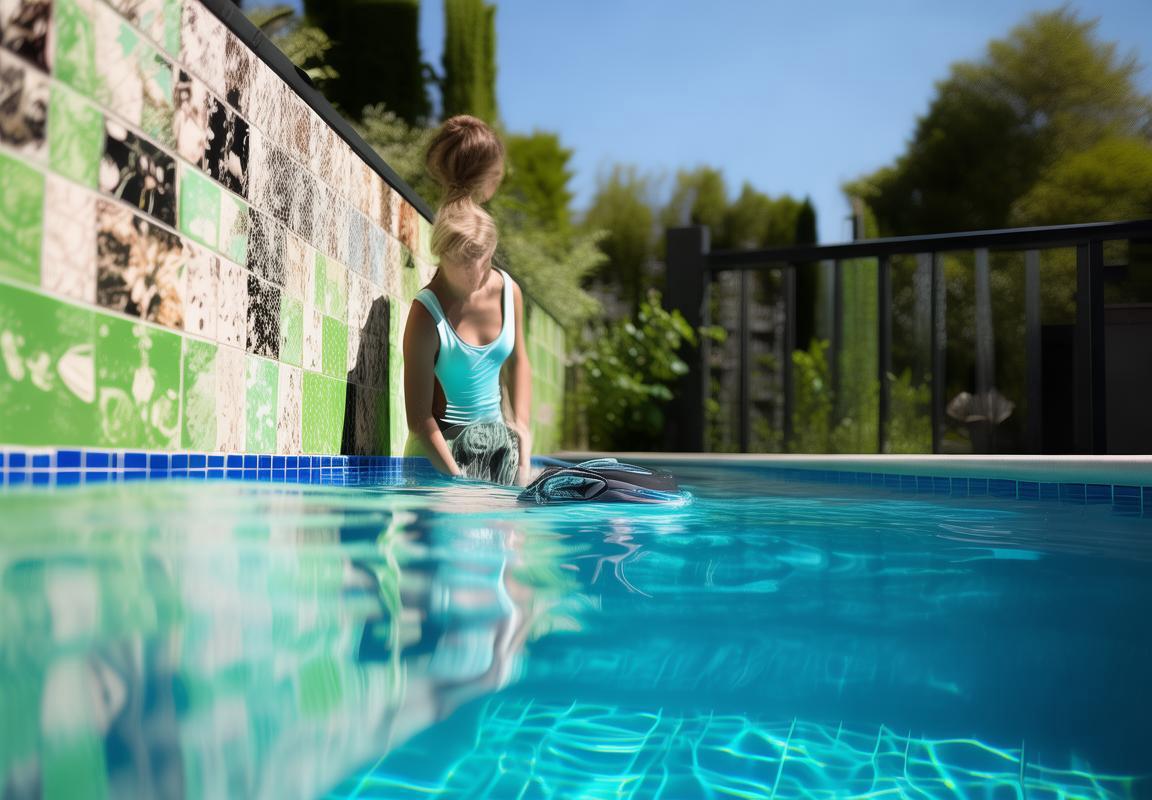
When to Call in the Cavalry (aka a Professional
Why Your Pool Walls Look Like a Science Experiment Gone Wrong
You step outside, ready for a relaxing dip, and bam—your pool walls look like they’ve been hosting a algae rave. Green streaks, weird white crust, maybe even some brownish gunk that makes you go, “What died in here?” It’s not just ugly; it’s a full-on betrayal. You just cleaned this thing, right?
Here’s the kicker: your pool is basically a giant petri dish. Sunscreen, leaves, bugs, and whatever else blows in (looking at you, neighbor’s BBQ smoke) create a buffet for algae and bacteria. Chlorine’s the bouncer, but it gets overwhelmed fast if you’re not careful.
The Usual Suspects:– Algae: The clingy guest that won’t leave. Green’s the most common, but black algae digs into plaster like it’s paying rent. Yellow algae? That’s the sneaky one hiding in shady corners.- Calcium Scale: Looks like someone sprinkled powdered sugar on your walls. Hard water + evaporation = this chalky nightmare.- Metal Stains: Rusty bolts or well water can leave streaks that look like a bad tie-dye job.
Myths That Waste Your Time:– “Just shock it!” Sure, shock helps, but if you’ve got a full-blown algae party, scrubbing’s non-negotiable. Shock’s the cleanup crew, not the bouncer.- “My filter will handle it.” Filters catch debris, not wall gunk. That’s like expecting your vacuum to wash dishes.
Pro Moves You’re Probably Skipping:1. Brush Before You Shock: Algae hides under a protective slime layer. Scrubbing breaks that up so chlorine can nuke it.2. Check Your pH Weekly: High pH makes chlorine lazy. Keep it between 7.4–7.6, or you’re just feeding the algae.3. Spot-Treat Stains: A vitamin C tablet rubbed on stains tells you if it’s metal (disappears) or organic (stays put).
When to Panic:– Walls Feel Slimy: Algae’s moving in.- White Crust Won’t Budge: Your water’s harder than your calculus final.- Stains Come Back in 24 Hours: You’ve got a bigger issue (like metals in your fill water).
Quick Fix Table:
| Problem | Immediate Action | Long-Term Fix |
|---|---|---|
| Green fuzz | Scrub + double shock | Weekly brushing |
| Chalky residue | Vinegar soak (for small spots) | Balance pH + alkalinity |
| Rust streaks | Citric acid paste | Metal sequestrant in water |
Bottom line: Your pool walls don’t have to look like a biohazard. Outsmart the gunk, and save the scrubbing for things that actually deserve it (like your ex’s name carved into a tree).
Let me know if you’d like me to proceed with the next section in the same style!